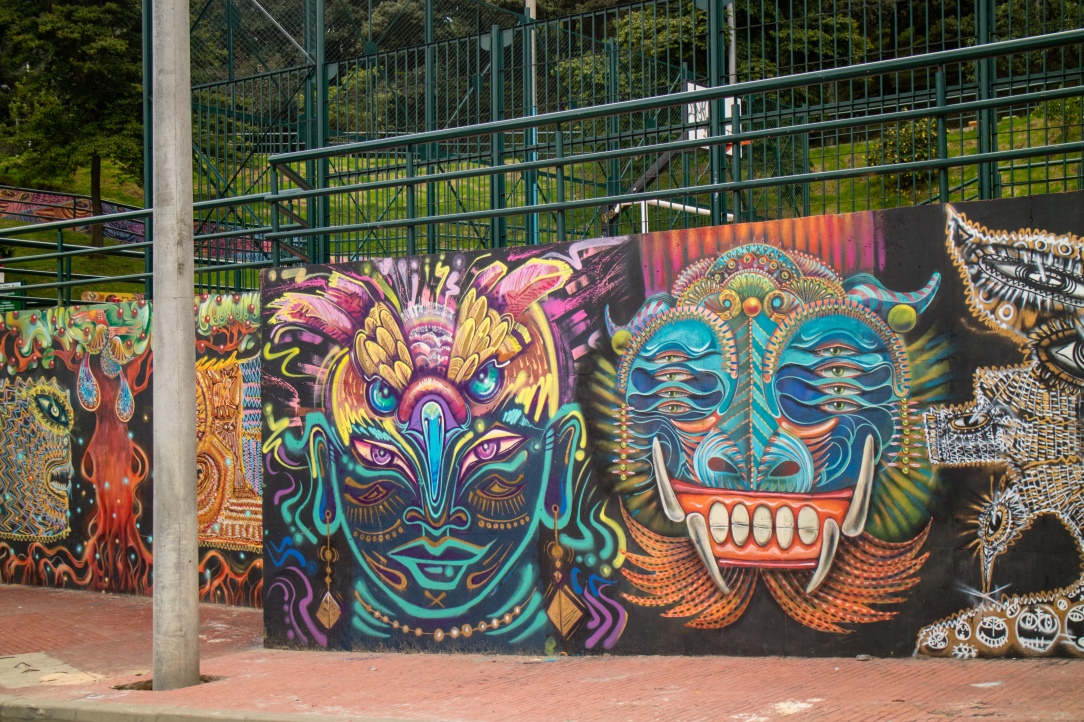I once bought a pair of yellow wax eyes at the bottom of the walking trail up to Monserrate in Bogota. As I climbed the stairs, I kept noticing vendors selling wax body parts. Arms. Legs. Torsos. Pregnant bellies. Pilgrims carried them with them and left or burnt them at the top. Rather than placing my eyes on an altar when I arrived to the top of Monserrate, I ended up buying them on my way down and carrying them around in my purse, half forgotten, for months.
I purchased them more out of curiosity than belief. I had always assumed that these objects represented a request for healing or for luck. I needed to make life decisions; perhaps an additional set of eyes would help. Plus, odd objects and tiny, interesting figures fill me with delight.

I eventually carried my wax eyes to San Cristobal de las Casas last August, during a work trip to Mexico, shoved into my suitcase at the very last minute, just in case. You never know when you might need a pair of wax eyes! During a brief break between meetings, we wandered through the cathedral in the main square. There, besides a vase of flowers, is a framed photo of Bishop Samuel Ruiz.
I had never heard of the Bishop, or Tatik “Father” as many Indigenous community refer to Samuel Ruiz until I first came to southern Mexico a couple years ago.
“His work turned the phrase ‘to worship God in the land of Indians’ from a curse to a blessing.” Fr. Gonzalo Ituarte Verduzco had told us, as we stood on the porch outside of the Bishop Samuel Ruiz museum. Ruiz arrived to Chiapas and dedicated his efforts to learning local languages and spending time with Indigenous communities, horrified at how white ranchers and politicians treated the Indigenous peoples like animals. This new awareness served to transform his own consciousness. The Bishop became a strong proponent for liberation theology, achieved through active non-violence, and redirected the work of the diocese towards social change.
After the Zapatista uprising, Ruiz offered to mediate between the Mexican state and the EZLN, for which he was nominated for Nobel Peace Prize. His legacy remains strong, through the work of the different human rights organizations he founded in Mexico, the way his name is proudly plastered on migrant shelters, and his photo sitting next to the altar in the main cathedral.

As my colleagues drifted outside of the church, I lingered behind, remembering walking beside the Pueblos Creyentes (Christian Base Communities) in Salto de Agua, a group formed through the organizing work of Bishop Ruiz. Without a real plan, and with just a few deep breaths, I left my wax eyes beside the photo and walked outside to join the others.

I was hoping for guidance, but I didn’t know that I actually meant thank you. That every Virgin painted on the outside of a house, or a city, is a space of gratitude, that every tiny yellow pair of legs carried up a mountain and burnt is an offering.
The Latin name for these figures is ex-votos, which means vow made. These are wax promises. In Mexico, ex-votos can also take the form of paintings that describe whatever took place. They are figures and expressions of gratitude or devotion, a promise kept or a sign of healing. Ex-votos are also offered in thanks for an unexpected miracle, not anything the petitioner thought to ask for, but something that simply appeared. The figures and stories are so much more than the sum of their parts, as Mariolina Rizzi Salvatori writes:
“Penned mostly at the bottom are stories of miraculous recoveries from illnesses; escapes from work related accidents, fires, weather disasters; happy resolutions to stories of lost children, family feuds, military executions, broken marriages, vehicular accidents, addictions, lost jobs, emigration, crossing of the Mexican border. . ., Mexican ex votos, construct a space and an audience for their poignant and sobering accounts of the daily fears, the spiritual and material needs, the dangers, the dreams and the aspirations of people that history tends to ignore. Humble and unlettered, they eloquently speak of enduring faith, class and economic inequalities, and human resilience.”

When I placed my eyes on the altar, I didn’t know that I was also getting ready to say goodbye, not to Mexico, but to Colombia. After much thought, and probably even more panic, I’m moving to Mexico City at some point this year. So much of my recent work has focused on migration from Central America that this feels like a strategic decision, to be closer to partners and local realities. I’ll be doing my same job, just from a different place. I want to gain a better understanding of this new context and living in a place is the best way I know how.
I will miss Colombia more than I realize. This is home. Or rather, I will miss the version of Colombia that has shaped who I currently am into being. I am so thankful for the unexpected miracle of sight, a new manner of seeing the world, of focusing on the details I would never have noticed before. There is a certain way the light shines, illuminating and creating shadows at the same time. It was in Colombia that I became a photographer and a writer, both unexpected gifts of vision.
I’m scared to leave, yet it’s time to learn how to see from a different vantage point. I want to allow the Samuel Ruizs and grassroots movements to sharpen my eyesight, just like the Montes de Maria and Justapaz spaces have done here, through the ordinary, extraordinary, details of daily life, of turning curses into blessings, war into peace.

